PDXWildlife collects over 500 lbs. of male giant panda feces each year in order to measure changes in testosterone and cortisol. This requires an ample amount of supplies including trash bags, collection bags, gloves, markers, two large chest freezers, and a very noisy tabletop freeze dryer (lyophilizer). The bagging, tagging, and storing process is fairly straight forward. However, when it comes to freeze drying, it deserves a little explanation.
The freeze drying process consists of three steps: prefreezing, primary drying, and secondary drying.
PREFREEZING- Since freeze drying is a change in state from the solid to the gaseous phase, all feces must be adequately prefrozen. If your sample is not sufficiently frozen, this will affect your ability to freeze dry. In short, you really need to cool down your samples- we chill ours down to -50 C inside of a -80 C condensor. As solvents (water) and solutes (material) freeze at different temperatures, the extremely low values ensure that the eutectics (mixture of substances that freeze at lower temperatures than the surrounding water) are adequately frozen. The temperature at which all eutectics freeze is called the eutectic temperature. If your sample is not brought below this temperature prior to beginning the primary drying, small pockets of unfrozen material can expand and compromise the product.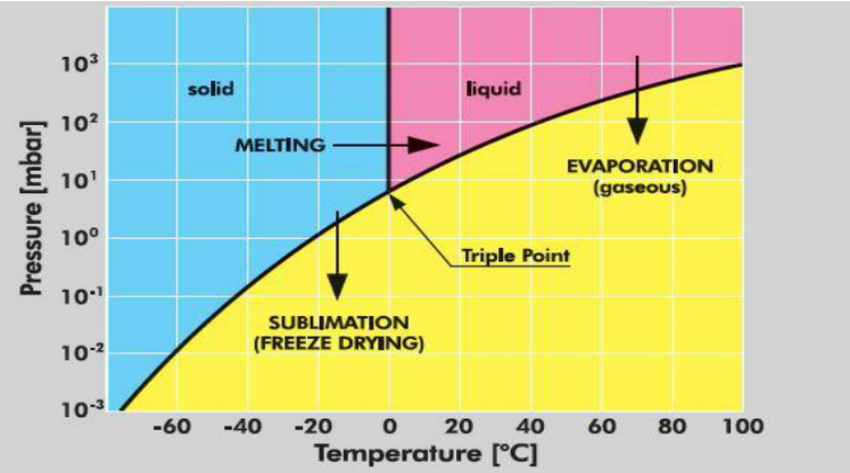
PRIMARY DRYING- After prefreezing, ice must be removed from the product by way of sublimination (solid to a gaseous state) that results in a dry, intact sample. This requires precise control of the temperature of the system. The actual rate of sublimination of ice from the samples depends upon the difference in vapor pressure of the product compared to the vapor pressure of the ice collector, as molecules migrate from the higher pressure sample to the lower pressure collector. And, as vapor pressure is related to temperature, it is necessary for the product to be warmer than the collector or ice trap. Managing the difference between the vapor pressure of the sample and that of the collector is thus controlled by slight changes in temperature between the two. The key is to not let the sample enter the liquid phase, but to incrementally raise the product temperature (still remaining frozen) and thus, the vapor pressure, so that molecules escape and collect in the ice trap.
- Panda poop ice crystals- Not for chilling your drinks
- The drying tray on top with the ice trap below
- A very strong vacuum pump
- Panda poop chest freezers
- Starts like this… (100 grams)
- And ends like this. (2 grams)
A necessary portion of the primary drying system is a vacuum pump, which lowers the pressure of the ice trap and creates a directional flow of molecules from sample to collector. Additionally, it should be noted that the entire freeze drying system uses a lot of energy in the form of heat. In fact, ten times as much energy is required to subliminate a gram of water from the frozen to the gaseous state as is required to freeze a gram of water. Simply put, when you skip states- Frozen to Gaseous vs. Frozen to Liquid or Liquid to Gaseous, it takes a lot of energy. The heat that goes into the system is very carefully controlled as to not warm the product above the eutectic or collapse temperature.
SECONDARY DRYING- After primary freeze drying is complete, and all ice has sublimed, moisture is still present in the product. The product may appear dry, but the residual moisture content may be as high as 10%. Continued drying is necessary at warmer temperatures to reduce this value. This process is called isothermal desorption as the bound water is desorbed from the product. Secondary drying is conducted at a higher product temperature than the ambient, but this is compatible with the sensitivity of the product. Everything else in the freeze drying system remains the same. Secondary drying usually encompasses 50% of the overall operational time.
When secondary drying is complete, your sample is ready to be stored. In theory, a properly freeze dried sample could have an infinite shelf life. We store our lyophilized samples in air-tight cryo-vials inside of a -30 C freezer to guarantee that the lovely panda poo freshness lasts for decades if need be.
___________________________________________________________
 So, this is a quick and dirty version of how the freeze drying process works. Some of the terminology can be a bit technical, but just remember that it’s all about removing water in the safest way possible to preserve the integrity of the sample and the hormones we will analyze for. As always, send me your questions by leaving a comment below. Cheers!
So, this is a quick and dirty version of how the freeze drying process works. Some of the terminology can be a bit technical, but just remember that it’s all about removing water in the safest way possible to preserve the integrity of the sample and the hormones we will analyze for. As always, send me your questions by leaving a comment below. Cheers!


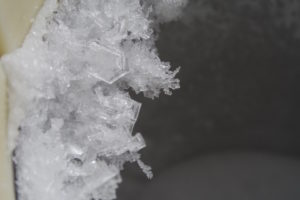
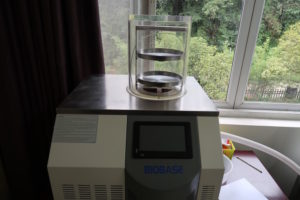
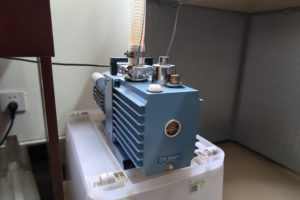
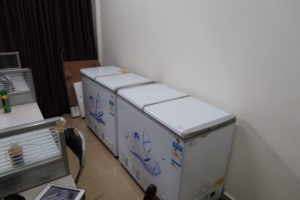
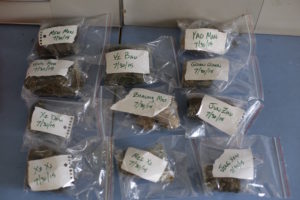
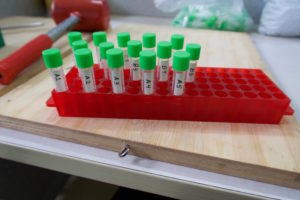
Thank you for explaining the process – I’ve often wondered how something was “freeze-dried” – ever since the astronauts first went to space when I was a kid!
It really is a fascinating machine that we would not have if it wasn’t for our generous donors. We have already saved enough space to fill a small car with feces. Funny how that much turns into a small hand held cooler once it’s dried.
Thanks JoAnn.
Absolutely amazing! Glad to have been a part of the donation process! Thanks and keep up the good work!